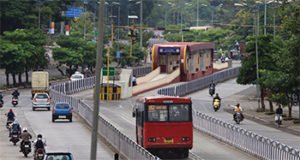 Tandon feels we must measure economic costs in terms of time saved, effort saved, smoother operations and minimized replacements due to regular maintenance. “If I can reach my destination in half the time, imagine the savings in fuel; if I do not have to buy generators and UPS back-ups, imagine the savings in capital; if I do not buy a car, instead commute comfortably and efficiently by public transport, imagine the savings”.
Tandon feels we must measure economic costs in terms of time saved, effort saved, smoother operations and minimized replacements due to regular maintenance. “If I can reach my destination in half the time, imagine the savings in fuel; if I do not have to buy generators and UPS back-ups, imagine the savings in capital; if I do not buy a car, instead commute comfortably and efficiently by public transport, imagine the savings”.
Gollop feels that the making of a smart city is not just about technology. “The successful implementation of a smart city will be reliant on engagement with stakeholders and the public, from the initial planning and design stages through to implementation. This will ensure adequate use of the facilities to justify the time, money & effort expelled and to make sure their ongoing relevance,” he says. “Operation of a smart city should be transparent to users, using the flexibility gained from using an open data approach to systems deployment to allowing users to ‘consume’ information in a way that is appropriate to them. The dissemination of data should, therefore, not be constrained to a particular media or application, but should allow multiple pathways for the public to access and use it. This user-led approach allows independent developers access to the data and does not restrict innovation.”
Gollop adds, “Over recent years, we have seen huge growth in the number of apps used to provide information to the public, so it is inevitable that the breadth of data availability will drive increasingly diverse offerings for people to use. In addition to items such as public transport service information, pollution monitoring and civil emergency information, the inventiveness of developers will result in a plethora of capabilities, including assistive technologies, to make using ubiquitous infrastructure like pedestrian crossings, easier for those with mobility or visual impairments.This type of approach can, therefore, increase functionality, while also offering the opportunity to reduce capital expenditure and running costs, by optimising the need for additional equipment (such as electronic real-time passenger information screens at bus stops), and allow users to access this information via their smart phone if that is more appropriate”.
Hence, the consultants not only select the component but also integrate it in a customised manner according to each project’s requirement. Smart City is not just about technology, as is evident. It is also about right planning, right service, right infrastructure, right solution and engagement of all the stakeholders.
 TrafficInfraTech Magazine Linking People Places & Progress
TrafficInfraTech Magazine Linking People Places & Progress